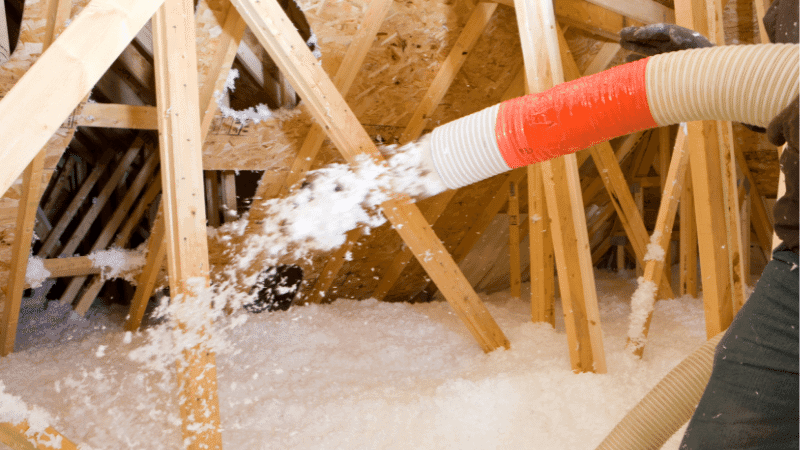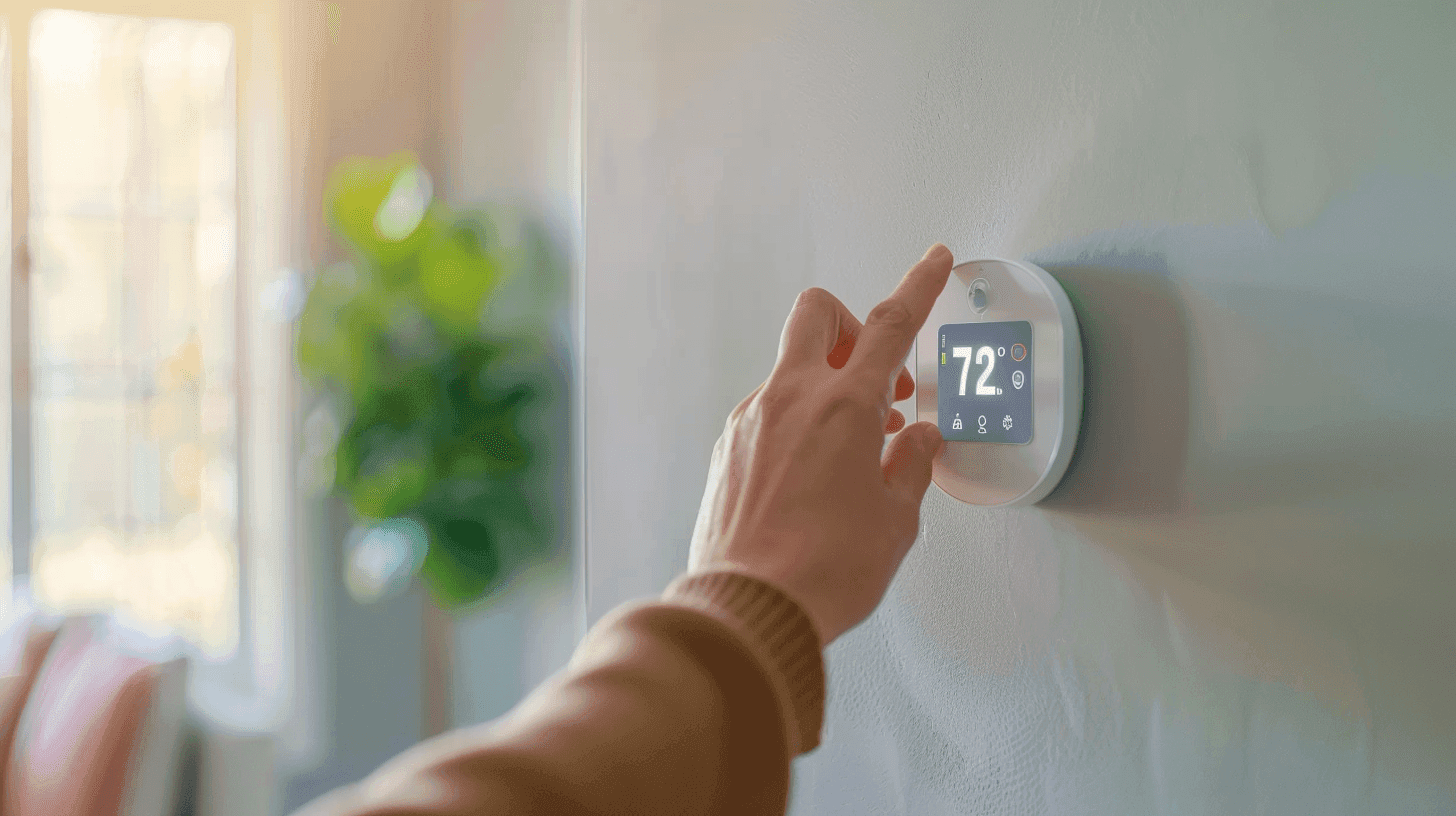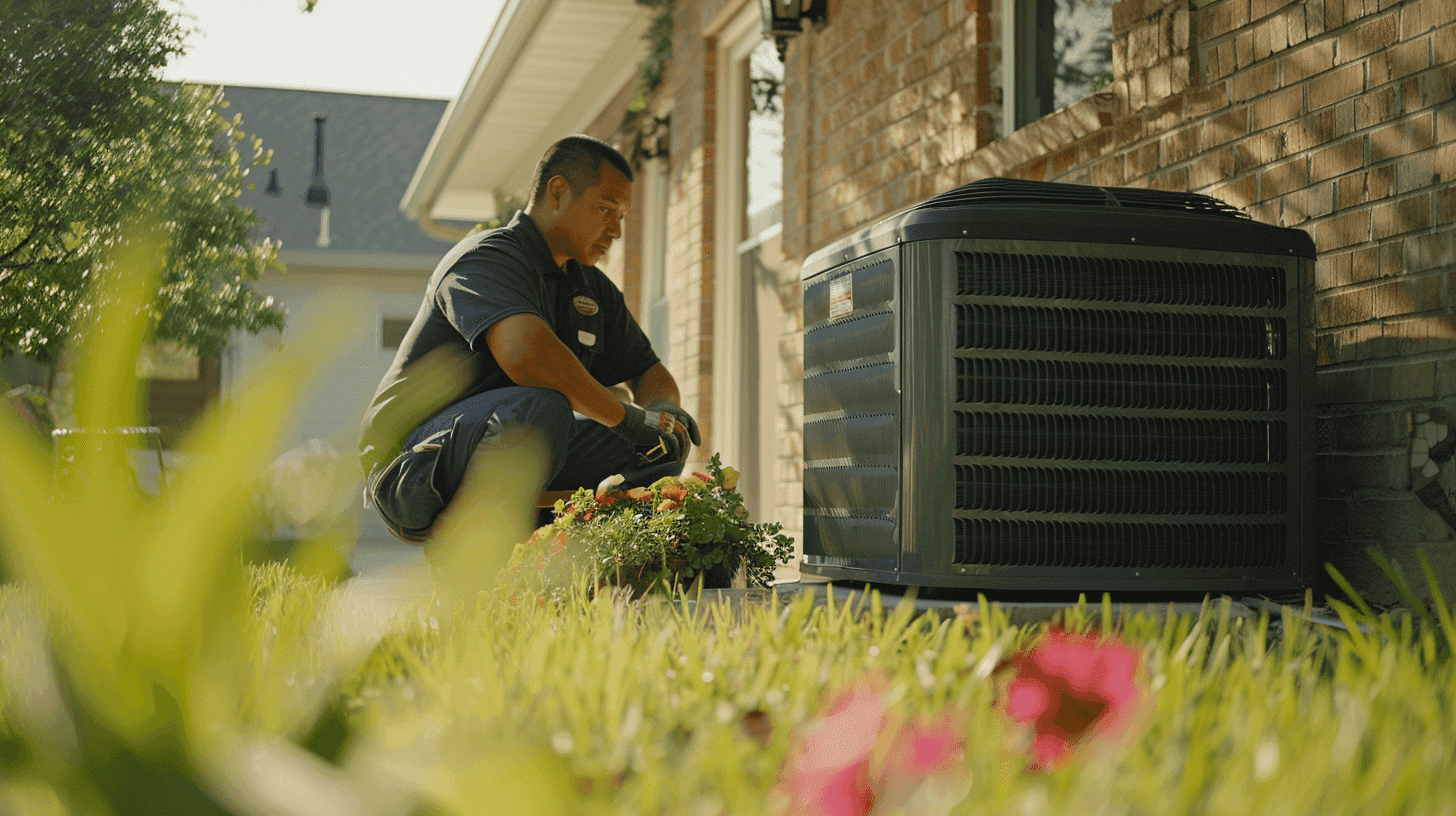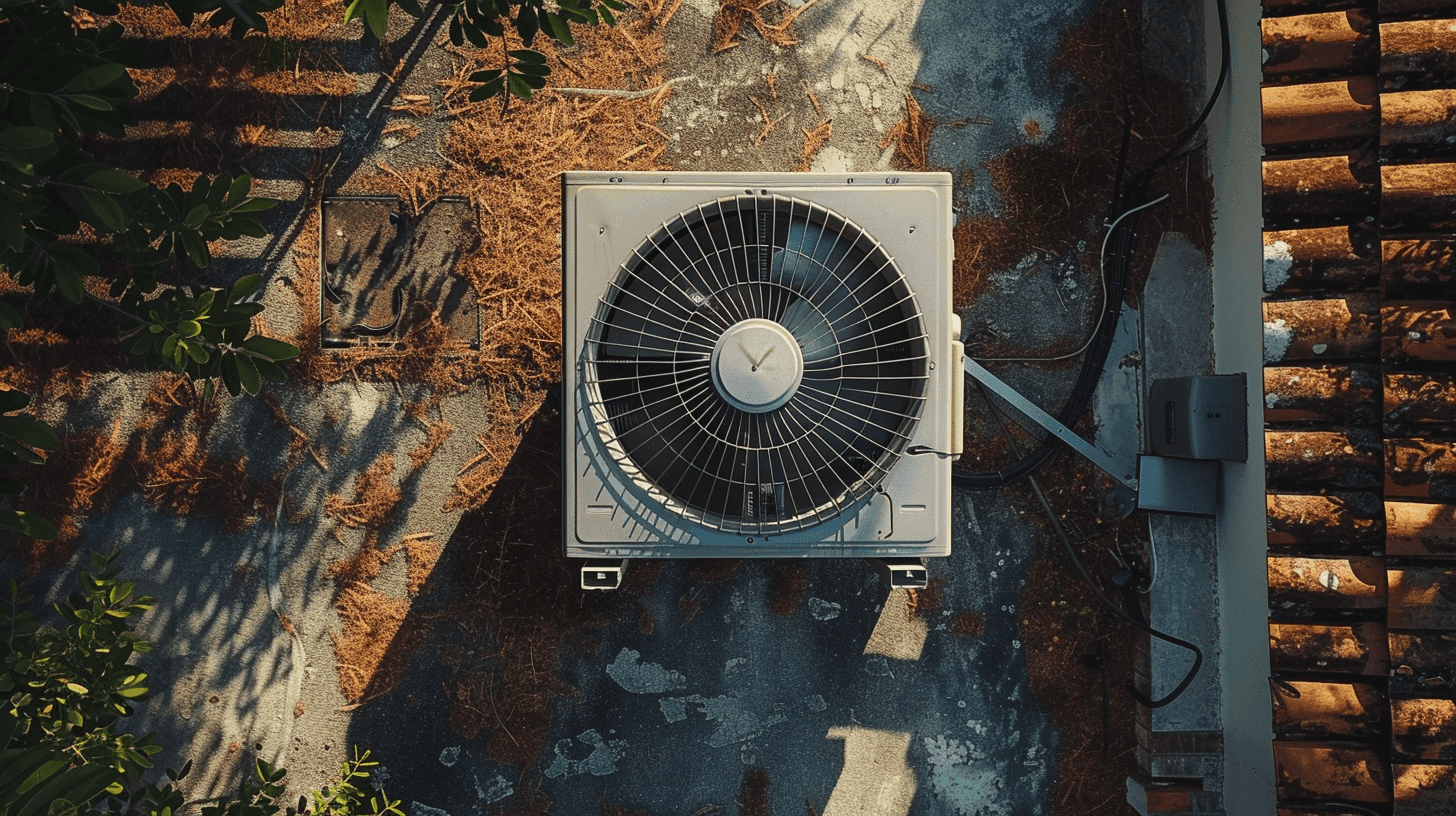
Calculating blown-in insulation costs: DIY or call a pro?
Sharing your quote takes less than a minute

Create a more energy-efficient home with blown-in insulation. It’s a simple, affordable option that keeps your home warm during the winter and cool in the summer.
Compare the cost difference between installing blown-in insulation yourself and relying on a pro. Cost data is courtesy of HomeAdvisor, Home Comfort Insulation, and The Home Depot.
Shopping for energy-efficient HVAC equipment?
Get a quote
What is blown-in insulation?
Blown-in, or loose-fill, is a dense variety of insulation. This thick insulation makes your home more comfortable. There are three types of blown-in insulation:
Fiberglass blown-in insulation is made small spun fibers of glass. The fibers bind together to create batts, which look like cotton candy. This is a good insulator for crawl spaces, attic floors, and other spaces.
Cellulose blown-in insulation is mostly made of recycled material, like newspaper. The crumbly material is covered in a fire-retardant chemical that makes the paper soft and helps it insulate well.
Rock wool, or mineral wool, insulation is made from volcanic rock. The rock is melted and spun into a thick material similar to fiberglass. Mineral wool is largely unaffected by moisture, is naturally fire retardant, and acts as a pest deterrent.
✅ Pros of blown-in insulation
- Reduces noise levels throughout your home
- Traps in heat, promoting lower utility bills
- Some varieties are fire-repellant, protecting your home from structural damage
- Insulates spaces that foam and fiberglass insulation don’t reach
❌ Cons of blown-in insulation
- Challenging DIY project unless you’re experienced with insulation
- Weight of blown-in cellulose can cause ceiling sag
- Material is difficult to remove if it gets wet
- Insulation settling can leave some unprotected spots in the walls
Where is blown-in insulation installed?
Blown-in insulation is installed in the walls of your home and the attic. Think of installing blown-in insulation like flossing your gums. Blown-in insulation fills in the gaps between the planks, where heat is most likely to escape.
Here are a few spots where blown-in insulation is installed:
- Interior and exterior wall cavities: the space between the planks that give your walls support and structure. These planks are sometimes called studs.
- Ceiling joist cavities: the space between the horizontal beams that support your ceiling.
- Attic floor: Blown-in insulation on the attic floor can prevent conditioned air from escaping out the top of your home.
Blown-in insulation doesn’t hold up well in foundation or masonry walls. Rigid board foam and spray foam are better options, as they offer better moisture control.
Calculate the cost of blown-in insulation
The total cost of installing blown-in insulation depends on a number of factors. Think of fiberglass, cellulose, and rock wool blown-in insulation as a good, better, best tier. Fiberglass is the least expensive, while cellulose is middle-of-the-pack, and rock wool is the priciest.
Loose-fill fiberglass insulation cost
Loose-fill fiberglass costs $0.40 to $1.10 per square foot, on average. Pricing could vary greatly depending on your region. Labor cost for attic insulation ranges from $40 to $70+ per hour.
Cellulose insulation cost
Cellulose insulation costs $0.60 to $2.30 per square foot, depending on brand and quality. Again, pricing may differ for your region. Plus, insulation companies will charge by the hour to move items in your attic to complete the job. It’s a good money-saving option to remove anything in the attic ahead of insulation time.
Rock wool insulation cost
Rock wool insulation costs $1.40 to $2.10 per square foot, on average. While rock wool is the least used type, it’s highly flame-retardant. We recommend it for areas where fire code requirements should be followed, like the walls connecting your house to the garage.
Whether you're installing blown-in insulation or buying a new HVAC system, ensure you receive a fair quote. QuoteScore can score your quote to tell you what's good, what's not, and recommend clear next steps.
Improve your home comfort with new HVAC equipment.
Get a quote
How to calculate blown-in attic insulation cost
Attics should be filled with dense insulation. Some states enforce a legal minimum R-value for attic insulation.
We suggest Googling “[your state or city] attic insulation compliance guide” before buying any materials. If your city or state has no legal minimum R-value, this free guide from EnergyStar.gov lists the suggested R-value for your climate.
If you’re installing attic insulation yourself, first calculate the square footage of the attic space that needs insulation.
Divide the square footage of your ceiling joist cavities by the square footage covered per bag of insulation. Round up to the nearest whole number. The result is the number of bags of insulation you need to buy.
Let’s look at the estimated cost of materials to pad your attic with fiberglass vs. cellulose blown-in insulation. If you hire a professional, they will supply the correct amount of insulation.
Cost of fiberglass materials
Fiberglass costs about $33 per 25-pound bag, on average. The cost of materials to insulate 1,000 square feet of attic space varies from $429 to $1,056, depending on the R-value and brand of insulation.
| Desired R-value | Square feet covered per bag | Cost of materials (1,000 sq. ft) |
|---|---|---|
| R30 | 66-77 | $429 – 495 |
| R38 | 50-60 | $554 – 660 |
| R44 | 43-50 | $663 – 759 |
| R49 | 38-44 | $746 – 858 |
| R60 | 31-37 | $1,056 |
Cost of cellulose materials
A 25-pound bag of cellulose insulation costs anywhere from $15 to $30. The cost of materials to insulate a 1,000-square foot attic ranges from $641 to $2,256.
| Desired R-value | Square feet covered per bag | Cost of materials (1,000 sq. ft) |
|---|---|---|
| R30 | 13 | $641 – 1,282 |
| R38 | 15 | $840 – 1,680 |
| R44 | 18 | $993 – 1,986 |
| R49 | 23 | $1,128 – 2,256 |
How to calculate blown-in wall insulation cost
Blown-in wall insulation isn’t as thick or heat-resistant as attic insulation. Usually, wall insulation has an R-value between R-13 and R-24.
We recommend hiring a pro for the installation (more on that below). The pro will decide how many bags of insulation you need.
Cost of blown-in wall insulation materials
Here’s a breakdown of the estimated cost of materials for 1,000 square feet of wall space. Pricing reflects national averages and excludes labor costs.
- Fiberglass: $400 – 1,100
- Cellulose: $600 – 2,300
- Rock wool: $1,400 – 2,100
Labor costs of blown-in insulation
Hiring a professional to install the insulation adds labor fees to the total cost. Labor costs range from $40 to $70 per hour, depending on your location and the time of year.
The charts below show the average labor time and cost by R-value. Depending on your attic or wall’s square footage, your final labor costs may vary.
Labor cost of attic insulation
Installing blown-in attic insulation can be a DIY project. It’s also relatively inexpensive to hire a professional for a job. Installation takes a half-day to a full day, depending on your square footage.
Labor costs average $160 to $560 in the U.S. Compared to wall insulation, attic insulation is less invasive and time-consuming to install.
| Insulation R-value | Labor hours (per 1,000 sq. ft) | Labor cost |
|---|---|---|
| R-30 | 4 | $160 – 280 |
| R-38 | 5 | $200 – 350 |
| R-44 | 6 | $240 – 420 |
| R-49 | 7 | $280 – 490 |
| R-60 | 8 | $320 – 560 |
Labor cost of wall insulation
Wall insulation is more expensive and time-consuming to install. Cutting a hole in the wall runs the risk of hitting a pipe or electrical wire, so a skilled professional is your best bet.
The labor cost of installing blown-in wall insulation averages $800 to $2,100. This range does not include the cost of materials and other service fees.
| Insulation R-value | Labor hours (per 1,000 sq. ft.) | Labor cost |
|---|---|---|
| R-13 | 20 | $800 – 1,400 |
| R-15 | 23 | $920 – 1,610 |
| R-21 | 27 | $1,080 – 1,890 |
| R-24 | 30 | $1,200 – 2,100 |
Finding a professional doesn’t have to be a hassle. Here are our tips for getting a quality job done at a reasonable price:
- Get 3-5 quotes from local HVAC contractors before choosing one.
- If you can, wait until the off-season in late fall or early winter. This season is generally a slow time for contractors, giving you the best chance of low wait times and labor costs.
- Budget for about 15% more than our highest estimate. The HVAC market fluctuates, and prices change often.
Should you install blown-in insulation yourself?
Installing blown-in attic insulation can be a weekend DIY project for someone familiar with the work. Otherwise, hire a professional.
We don’t recommend installing blown-in wall insulation yourself. The pipes and electrical wiring behind the drywall are a safety hazard for inexperienced drillers. Go with a licensed and insured professional.
Talk to an HVAC professional about insulating your home.
Yes, please!
Blown-in insulation machine rental cost
Home improvement stores usually rent out insulation blowers in 24-hour time slots. Nationally, daily rental costs $100 to $200.
Seasonal discounts and deals can reduce the machine rental cost. Some companies offer free 24-hour blower rentals when you buy insulation in bulk.
Installation toolkit
Installing blown-in attic insulation yourself? You’ll need these affordable, easy-to-find safety materials.
- A duct mask
- An eye covering
- Work gloves
- Old, loose clothes or disposable coveralls
- A wooden board to walk on
Check out our attic insulation guide for more DIY tips and tricks.
Sharing your quote takes less than a minute




